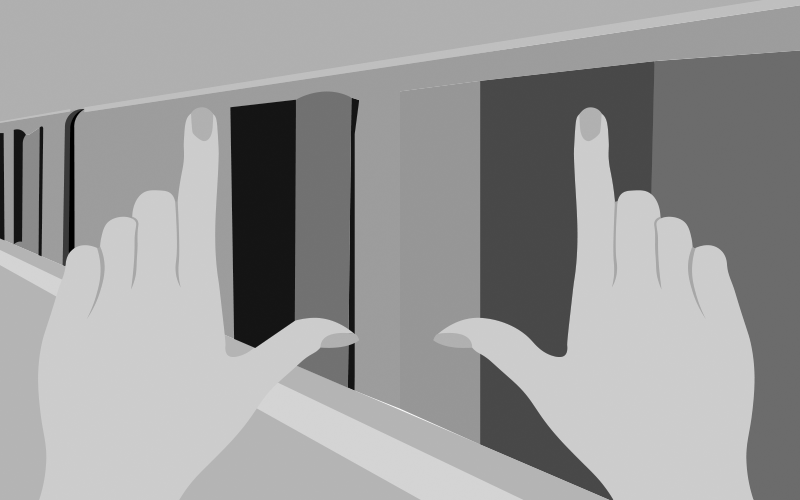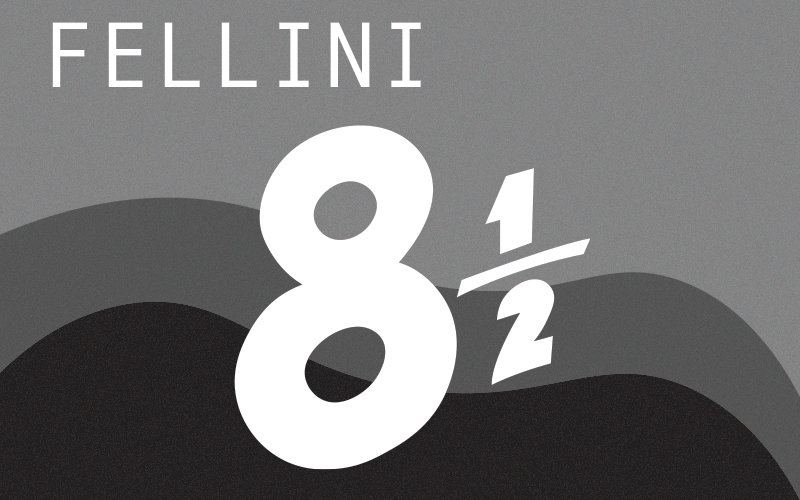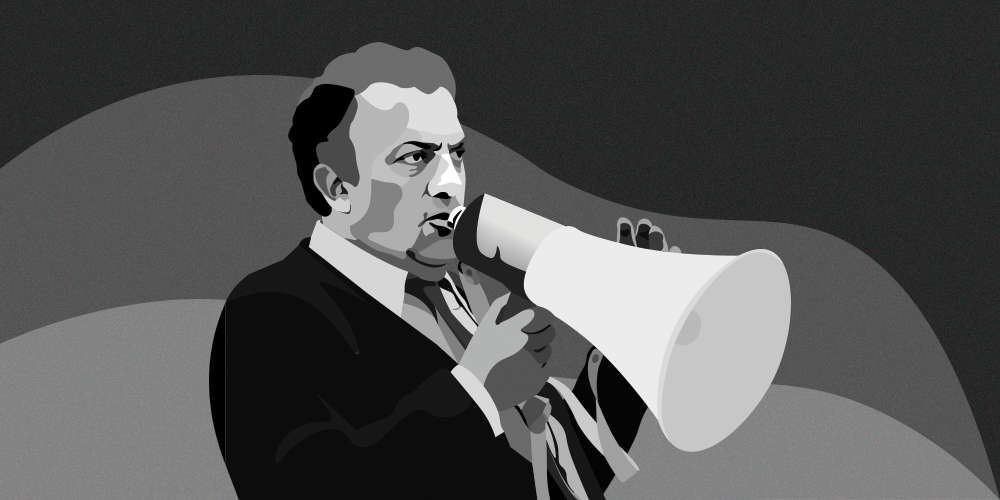When he was a young boy, maybe about seven or eight years old, Federico Fellini stole away from home in his small seaside resort town of Remini and joined the circus. While wandering awestruck under the big top, he hung out with circus folk and wound up tending to a sick zebra. Quite an experience for an imaginative little fellow. Yet considering that Fellini openly admitted to being “a born liar,” we don’t have to take his yarn at face value. But we shouldn’t shrug it off entirely either: there’s truth to be found in a tall tale, even if it’s told by your wicked uncle
Factually true or not, the essence of Fellini’s filmmaking is in that anecdote. Fellini had a lifelong fascination with the circus as a magical space where everyday reality is transcended, enhanced. Everyone is performing, clad in outrageous costumes and masks, creating a transparent carnival where the extraordinary is reality. This type of vision works best in visual mediums, where the image carries the most meaning. Fellini started off as a cartoonist after he moved to war-ravaged Rome and never lost that comic sensibility.
As delightful as Fellini’s storytelling often is, it burrows underneath luscious surfaces and zany caricatures in order to discover the humanity squirming beneath all the glittering surfaces. Fellini basked in his artificial worlds while self-consciously placing his all-too-human fears and anxieties in the center. His way of mixing grand opulence with postmodern unease made him an essential fixture in world cinema from the postwar era well into the ‘70s. Criterion’s lovingly designed career-spanning box set resembles an old scrapbook salvaged from an imaginary circus. It’s easy to see how compelling these films were from the imaginative movie posters taken from around the world.
8 ½ — whose working title was “the beautiful confusion” — is often considered his masterpiece and a contender for one of the greatest movies ever made. It all started with a nervous breakdown. Fellini had already made a name for himself with Oscar-winning parables of the human condition like La Strada and La Dolce Vita and everyone at Rome’s Cinecitta studios was excited to work with him. This sounds like any artist’s ultimate fantasy, but it turned into a living nightmare for a successful director in his early forties.
Fellini looked around at all those supportive faces and instantly felt like an utter fraud. He had everything he could ask for at his disposal and no idea what to do with it. Out of sheer desperation, he wound up making a movie about a director who is having a breakdown while trying to make a movie, taking us on a multilayered trip through his alter ego’s unconscious as he tries (and often fails) to figure everything in his life out on the fly. Considering all the chaos that comes with making any film, let alone one as complex as 8 ½, the fact that it all somehow comes together feels miraculous. The film’s unofficial motto was written underneath the cameras: “remember, this is a comedy.” And so, it is.
These days, the film-within-a-film structure has probably gone stale from overuse. Maybe in the older films the reflexivity still seems novel. Plenty of directors did it before him, but Fellini arguably got more emotional truth and visual depth out of it than anyone. Amarcord, which I’ve finally decided is my favorite, takes us on a grand tour through a fictionalized town much like Rimini, but was inspired by a moment when Fellini realized that he couldn’t remember if his own memories of childhood were actually real or imagined.
His characters are often figuring out the plot along with you, they sometimes wander through their own stories as they unfold, as intrigued but curious as the audience is about exactly where they’re headed, the narrative progressing with all the surreal inevitability of a dream. Fellini’s films can be like wandering from room to room at a vast and colorful party, perpetually overflowing with the rich and strange. Fabulously dressed people cavort within ancient buildings, spontaneously breaking out into song and dance. We gaze at vast oceanside vistas, float on plastic oceans, and peer down windswept city streets at night. We encounter clowns, intellectuals, mystics, sometimes a combination of all three. The films are bursting with all manner of eccentrics talking and flirting and pondering their next move. Some gaze back at you with their ancient eyes and painted cheeks, laughing.
Fellini was never shy about following the labyrinth of what Carl Jung (a key influence) once called “memories, dreams, reflections.” Much of his imagery emerged from a mix of private intuition and the theoretical buzz of the intellectuals he never fully trusted but kept around anyway. At their best, his films end up creating, as if by sleight of hand, an ontology of the carnival: what’s real in his films looks that way because it’s fake and what’s fake somehow ends up looking more real.
Fellini’s early work is charming and observant and conventionally plotted. As he develops over the years, he gradually digs below the surface of what we assume to be reality and finds the ancient and mythical graffiti etched beneath the sidewalk. The archetypes are culled from passing faces in a crowd. Are there caricatures, grotesques, rampant artificiality? Of course. Look around you, the world is full of it, and it becomes clearer if you can adjust your way of seeing.
There’s a lovely democratic openness to the way Fellini films people. They’re often quite odd in some way but they aren’t presented as freaks or as sociological specimens. Many of these eccentric faces have a fresh off the street vibe because they come straight from the perpetual casting call at Fellini’s longtime office at Cinecitta. They linger at the edge of the frame, doing their own thing. Whether they’re sizing the viewer up or indifferently passing them by, it’s made clear that you’re in their world, if only for a moment. In this sense, he’s as much of a realist as anyone. In his late film Intervista, when a documentary crew from Japan earnestly inquires where he gets his crazy cast of characters from, he takes us directly into the Roman subway.

Fellini’s fascinated by what makes people unique, what makes them remarkable, how they carry themselves with a certain irrepressible style. He delights in difference, variety, and individuality. There’s an intuitive understanding of adolescence (which tells you something about his mentality at times) in the arrested development of the townie buddies in I Vittelloni but he gives their willful immaturity plenty of scrutiny. Fellini didn’t like to be overtly political, but he satirizes the adolescent importance of the institutions conventionally assumed to be all-powerful: the church, the school, the family, and especially Mussolini’s blustering fascism. We are invited to laugh at the stuffy bigwigs who will never be wise enough to see what fools they really are.
You could trace a rough outline of the history of postwar Italy through Fellini’s filmography. He helped write scenes for Rossellini’s genuinely courageous Rome Open City, which helped pull a fractured resistance together during World War Two. The shady characters in The Swindlers (Originally titled Il Bidone) are scrambling to survive amid the postwar wreckage by hook or by crook. The “economic miracle” of the ’60s increased the average consumer’s access to fancy things like new cars and TVs, spawning the divas of the “white telephone” melodramas. Fellini responded with the epic La Dolce Vita which took the orgy of conspicuous consumption to task, showing how empty and boring the sweet life of leisure can be at heart.
A little more than 60 years later, the film has much to tell us about the moral vacancy of social media influencers, lifestyle branding, and celebrity obsession, all of which are very much at work today. 1972’s Roma was a real revelation for me this time around, portraying Rome — famously referred to as “the eternal city” — being gradually hollowed out from the inside by a fossilized tradition and the callousness of urban renewal. And there’s even a wildly imaginative fashion show done for the dubious benefit of a snacking, doddering old Pope.
To be frank, some of the gender politics haven’t aged well. Fellini’s honest enough with his own personal absurdities and shortcomings that he doesn’t ignore them in his male characters. They are enraptured with femininity in all its many splendid forms and aren’t shy about showing it. Many of the women take the attention in stride, flaunting the power their sexuality gives them within a deeply patriarchal society, and they relish being their own kind of fabulous whether they live comfortably or hand to mouth. They talk back, taunt, tease, and are unafraid to call bullshit.
We see how women are consistently betrayed, manipulated, treated as afterthoughts, or pedestaled as goddesses. When it’s played up to excess, as in 8 ½’s infamous harem sequence, it’s not hard to see an over-the-top parody of the ways in which men enforce their need for power and control precisely because they feel utterly helpless. The small-town cads and fussy bourgeois husbands in the early films are too full of themselves to understand how they instinctively lean on women to prop up their fragile egos.

We see how many men are perfectly happy to obsess over their idea of women yet don’t have a clue what to actually do with them as actual people. When one of the horny teenagers in Amarcord finally gets his big chance with the impossibly voluptuous tobacconist, he is haplessly engulfed in her pulchritude. The ultimate power is hers and she knows it, kicking the little shmuck out of her shop without a second thought. Precisely because Fellini’s willing to display a world of fantasy, he is also perfectly aware of how ridiculous and juvenile those fantasies can prove to be. If overcompensation is at the root of boorish behavior, a lesson never timelier than now, then this insight makes Fellini’s films a bit more progressive than they might seem at first blush.
Nights of Cabiria’s titular sex worker doesn’t have much, but Fellini’s wife, muse, trusted collaborator, and “incarnation of the Felliniesque” Giulietta Masina perceptively shows that her free spirit is her strength and that being herself is enough. Her impetuous tenacity connects her to Chaplin’s Tramp and the blithe spirits of the silent era. When Cabiria suffers through a particularly cruel twist of fate, she rallies the only way she knows how: Masina turns to the camera and gives one of the most beautifully heart-wrenching looks in all of cinema. If the look in her plaintive, pained, but resolutely hopeful face doesn’t put a lump in your throat, I don’t know what to tell you.
Constantly toggling between the real and the fake, melding the deeply personal and the universal, working through private emotions amid public spectacle, Fellini is the maestro. Standing in the middle of the magic circle of the camera lens with a fedora and a megaphone, taking us on a guided tour of the Felliniesque. Martin Scorsese recently lamented in a cover story in Harper’s that the kind of willfully experimental, richly symbolic, romantic vision of cinema that Fellini represented — of film as an art that is simultaneously entertaining and profound — was being lost in the era of disposable streaming and binge-watching. Maybe this is true. But it doesn’t have to be that way. Fellini liked to say that “I fall asleep, and the fete begins.” Of course, we have it much easier than Fellini did, who was both inspired and haunted by his ability to project his inner world onto the big screen. Nodding off isn’t necessary for our feast to begin, however. All we have to do is watch and the fete begins anew. •




